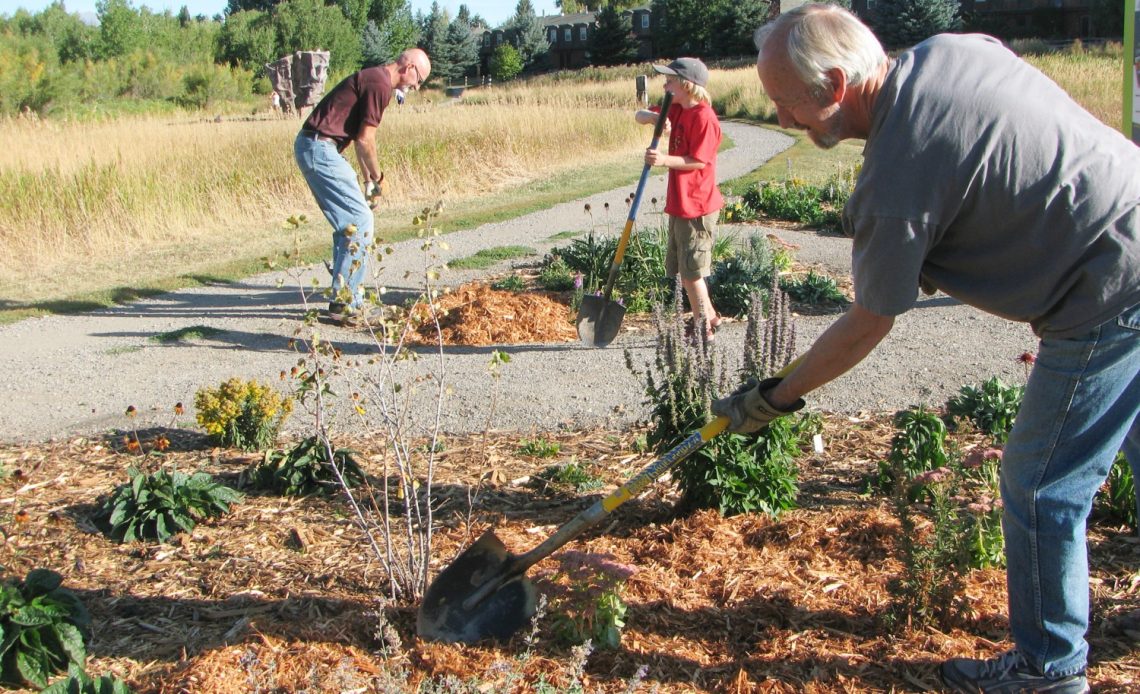

We’re here to help! Wild Yards is a completely free website that is 100% dedicated to helping you create a wildlife-friendly, sustainable yard. Read more
WildYards is reader-supported. When you buy a product through a link on our site, we may earn a comission. Every product is independently selected by our (obsessive) editors and our reviews are unbiased and objective. Read more about our mission or our privacy policy.
Get a Landscaping or Gardening Quote
Enter your zip code
Get a Landscaping or Gardening Quote
Enter your zip code
Are you looking for ways to make your backyard vegetable garden more sustainable? Then chances are, you’ve heard the phrase “zero-waste gardening”. As it turns out, gardening is a great way to reduce the amount of waste you produce, which can offset the negative effect we, as humans, have on the environment. But what is zero-waste gardening, exactly, and how does it help the environment?
Zero-waste gardening is an organic gardening strategy that involves cutting down on the amount of waste you produce by doing simple things like composting and growing in terra cotta pots, rather than plastic ones.
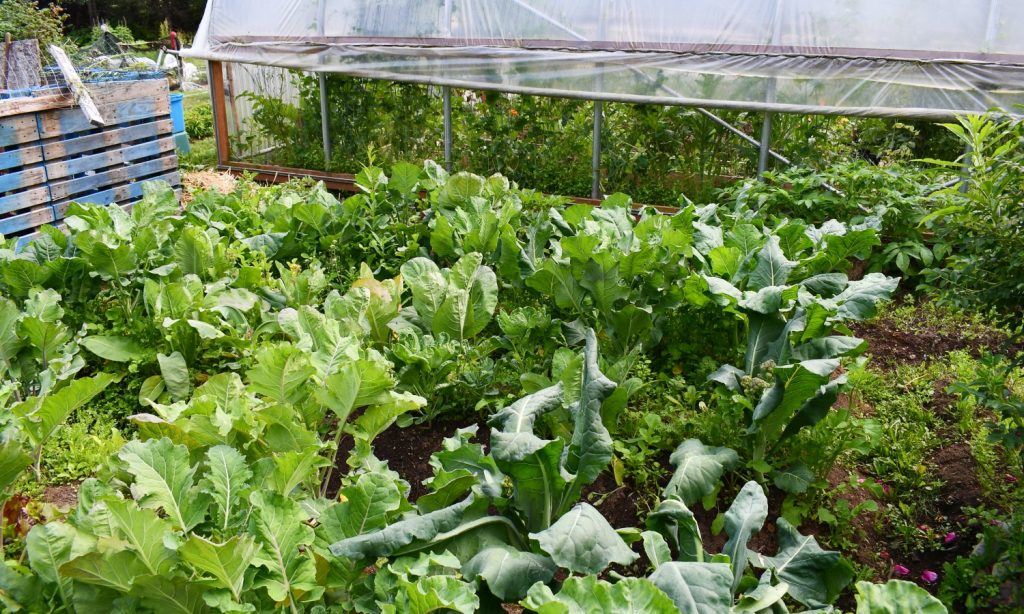
What is a zero-waste garden?
Traditional gardening is about getting a garden to produce as much as possible through whatever means possible. If you have to spray the plants down in chemicals to protect them from fungi and insects and feed them synthetic fertilizers to get them to grow, then so be it.
But zero-waste gardening is a form of sustainable gardening that allows us to work with nature, not against it.
Zero-waste gardening is a method of gardening designed to minimize waste production and repurpose as many materials as possible to prevent them from being disposed of in a landfill, with an added emphasis on conserving resources.
Zero-waste gardening can take years to refine. It takes careful planning, and trial-and-error to figure out what works best for your household and your garden.
But you can implement a ton of zero-waste gardening strategies in your garden today that can make a world of difference to the environment over time.
10 Zero-waste garden ideas for your backyard
Ready to get started with zero-waste gardening? Have no idea where to start? Don’t worry, it’s easy. Check out these 10 easy zero-waste gardening tips to make your backyard garden greener!
Start composting
Even if you live in an apartment and only have a small balcony container garden, you can still begin composting by using a 5-gallon bucket.
Adding table scraps, fruit and vegetable peels, plant clippings, old flowers, and other green matter to your compost will enrich it with nitrogen, the most essential element for plant growth.
Meanwhile, old paper, coffee filters, eggshells, cardboard, and other inert brown matter add carbon to the mix and provide the composted materials with additional structure.
You can even pour liquid fertilizers over your compost to make it more nutritious. Old coffee, and water used to boil rice, meat, pasta, or potatoes, add valuable trace nutrients and amino acids to your compost, which your garden will benefit from later on.
A compost heap gives new life to old biodegradable materials that would otherwise be sent to the dump.
Compost has been shown to nourish the healthy bacteria in the soil. These bacteria enjoy a symbiotic relationship with your plants, feeding on the sugars your plants produce, while also breaking down nutrients for your plants to absorb.
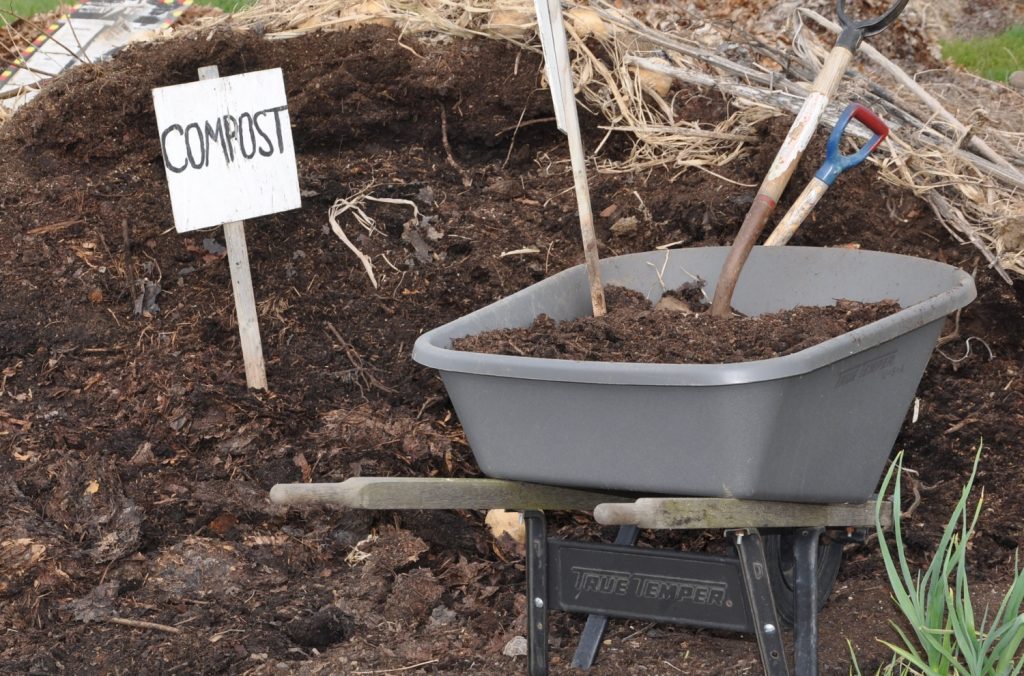
Avoid bagged soil mixes
You want your garden to produce as little waste as possible, so avoid buying bagged soil mixtures and purchase soil by the yard, instead.
We always recommend inspecting the soil prior to purchase to ensure it’s of the highest quality.
Some soils are full of trash, rocks, large dirt clods, and roots that make them virtually unusable. But in most cases, you can track down clean soils which you can purchase by the dump truck load.
Purchasing soil by the yard is especially helpful if you have a large garden or multiple raised beds to fill. You get a lot more bang for your buck this way, and you won’t have a bunch of plastic soil bags to toss in the trash when you’re done.
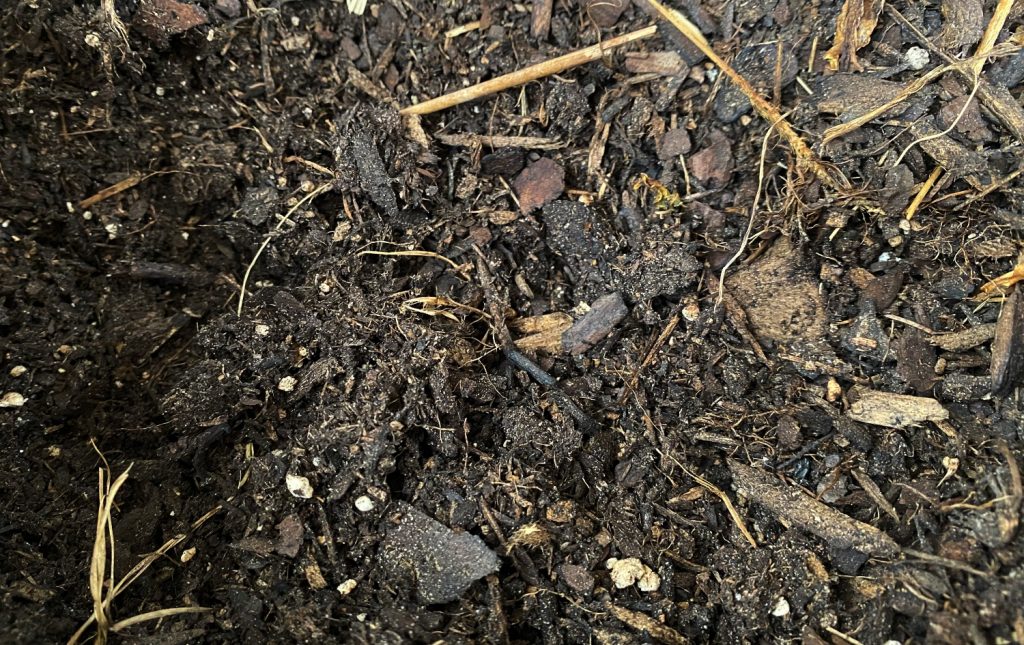
Use organic mulch
Organic mulches, like straw, leaves, lawn clippings, and wood chips, prevent your soil from drying out.
Sealing moisture into the soil helps keep your plants hydrated, obviously. But it also helps keep your plants’ roots cool in the summertime.
Over time, as organic mulches break down, they add structure and nutrients to the soil, where your plants can continue to benefit from them.
Another huge benefit that mulch has to offer is that it can cut down on the time you spend weeding.
Some gardeners, especially those who follow the Ruth Stout method, apply mulch 8 inches thick to suppress weeds completely.
Give it a try! If you’ve struggled to grow a garden successfully in the past, you may just find that a dense layer of organic mulch was all your thumb needed to turn green!
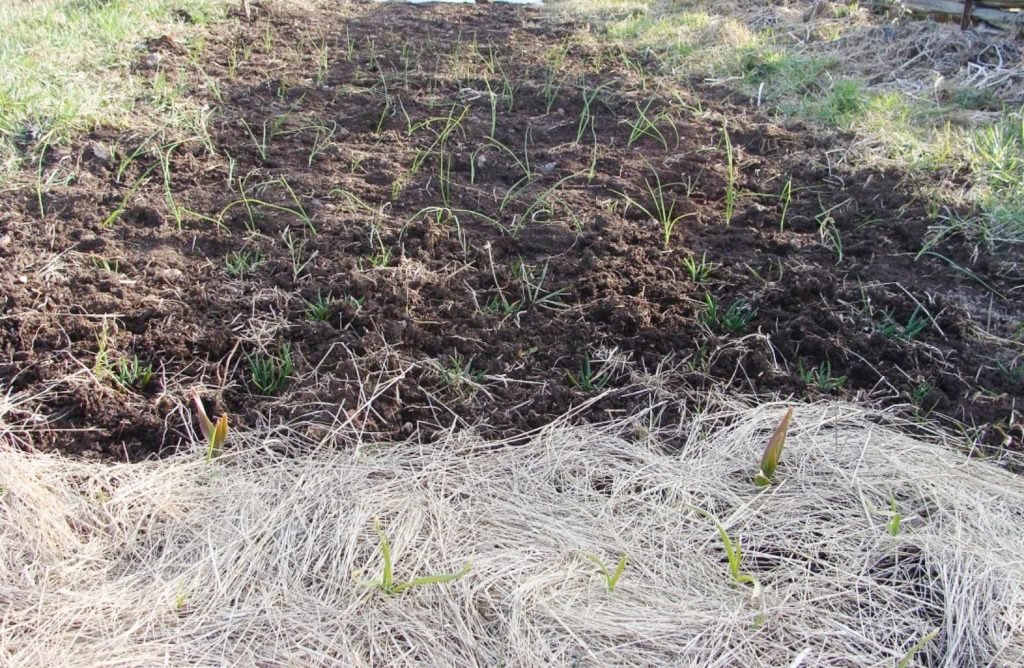
Build a hugelkultur bed
Hugelkultur opens the door to all sorts of sustainable gardening possibilities.
A good hugelkultur bed starts with a mixture of hardwood and softwood logs. This creates your base layer and provides the bed with nutrients as the wood breaks down over the years.
Over the wood layer, you have a layer of sticks and twigs followed by leaves, lawn clippings, and other plant matter.
Next, you have topsoil, preferably topsoil that has been enriched with compost and manure, just as you would mix if you were intending to fill new raised garden beds.
Once it’s finished, your hugelkultur mound should be topped off with a thick layer of mulch. Wood chips work well, however, if your hugelkultur mound is steep this creates a problem.
Wood chip mulches tend to slide. We’ve found lawn clippings and/or old hay work better for steep hugelkulturs.
Over time, composted materials can be added to your hugelkultur to enrich the soil for your plants.
Building a hugelkultur mound can be a labor-intensive process, at least, at first. But, eventually, it becomes one giant recycling bin for biodegradable materials, so it’s a great way to start zero-waste gardening in your backyard.
Harvest seeds
Harvesting your own seeds is a small step that can have huge benefits for your ecoregion.
By gathering seeds from your garden, rather than purchasing new ones, you can eliminate carbon emissions created from the shipping process.
Harvesting seeds is easy, though the process varies from plant to plant. You’ll need to research exactly how to harvest seeds from the plants you want to grow.
We recommend starting with heirloom varieties, as these tend to be the plants that produce the most viable seeds.
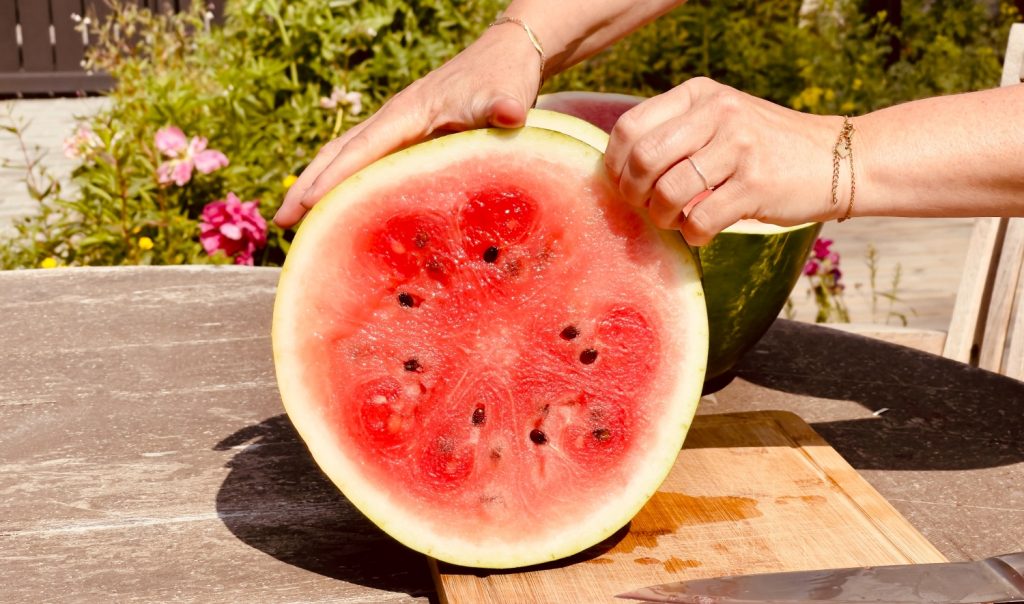
Choose biodegradable pots for propagation
Plastic pots can sit in a landfill for years, polluting the soil, water, and air with toxic chemicals.
So when it comes time to propagate your cuttings or start new seedlings, choose biodegradable seed pots instead.
Peat seed pots are a good option and are pretty easy to come by. Most garden centers carry them. You can also purchase larger pots made from recycled materials, and these are great for starting trees and shrubs.
Of course, you don’t have to purchase seed pots at all if you don’t want to. Old newspapers and burlap sacks can be folded into makeshift pots. Empty toilet paper and paper towel holders also work well.
Terra cotta, ceramic, glass, galvanized metal, and porcelain vessels can also be used to grow in. We had a neighbor who grew cherry tomatoes and yellow squash in an old cast iron bathtub on his front lawn.
So just use your imagination! You can grow in all sorts of things, and eliminate the use of those pesky plastic pots.
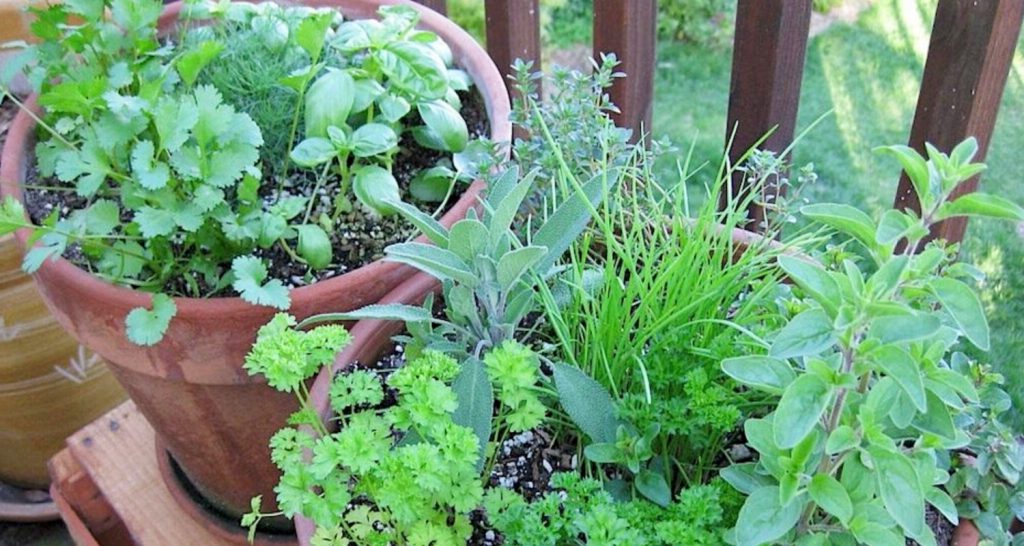
Mix up organic homemade herbicides, pesticides, and fungicides
Organic gardening is all hunky dory until diseases set in and garden pests barge in. Then what are you supposed to do?
You may be tempted to reach for chemical-based garden products to keep infections and insects at bay. But organic alternatives can be just as effective, if not more so, and they don’t pose such a threat to the environment.
If it’s insects you’re fighting, whip up a homemade insecticide. Neem oil and other essential oils can ward off aphids, spider mites, and armyworms. And, if worst comes to worst, you can always use diatomaceous earth to deal with serious infestations.
Meanwhile, you can make your own fungicide by mixing a teaspoon of vegetable oil and a teaspoon of dishwashing liquid into a quart of water.
This solution helps manage powdery mildew and other fungal infections.
As for herbicides, corn gluten meal works surprisingly well as a pre-emergent. Corn gluten contains substances that prevent surrounding seeds from sprouting.
Use a weed torch, boiling water, or baking soda and vinegar to tackle weed problems without resorting to toxic chemicals.
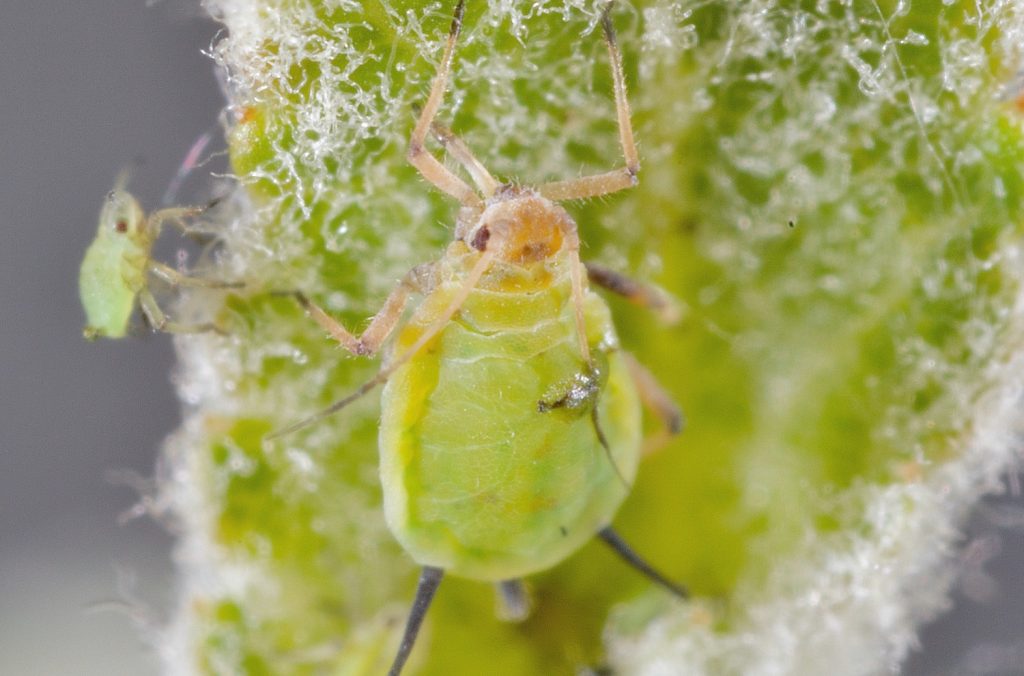
Invest in a rain barrel
Rainwater is so good for plants. You may have noticed this yourself. Plants always seem to perk up after a good rain in a way that they don’t after a long drink from the hose.
If you live in a place where it’s legal for you to harvest rainwater, you should.
Harvesting rainwater with the help of a rain barrel, or similar setup, allows you to utilize one of the most essential resources your garden relies on.
If the law dictates that you cannot use a rain barrel, you can still conserve water by investing in soaker hoses, which are a much better alternative to traditional hoses and sprinklers.
Soaker hoses moisten the soil slowly, ensuring each drop of water makes its way to your plant’s roots, rather than coating your garden’s foliage with water, which may contribute to diseases.
Build a greenhouse
Greenhouses trap heat and moisture, creating an ideal environment for propagating plants, whether you’re growing them from cuttings or from seeds.
The humidity in a greenhouse allows young plants to thrive as they get established, and can help reduce the amount of water you use to hydrate your seedlings.
It’s much easier to protect young plants from insects when they’re being grown in a controlled environment. This enables you to cut down on your usage of chemical-based pesticides.
It’s also easier to harden off your young plants in a greenhouse. Plants can get used to outdoors, reducing the risk of transplant shock later on.
If you can, we highly recommend building a greenhouse. You can also purchase prefab greenhouse kits, which are ideal for small backyards in subdivisions.
If you don’t have room for a greenhouse, you can create individual greenhouses for your seedlings by placing glass jars over them to keep the growing plants warm and moisturized.
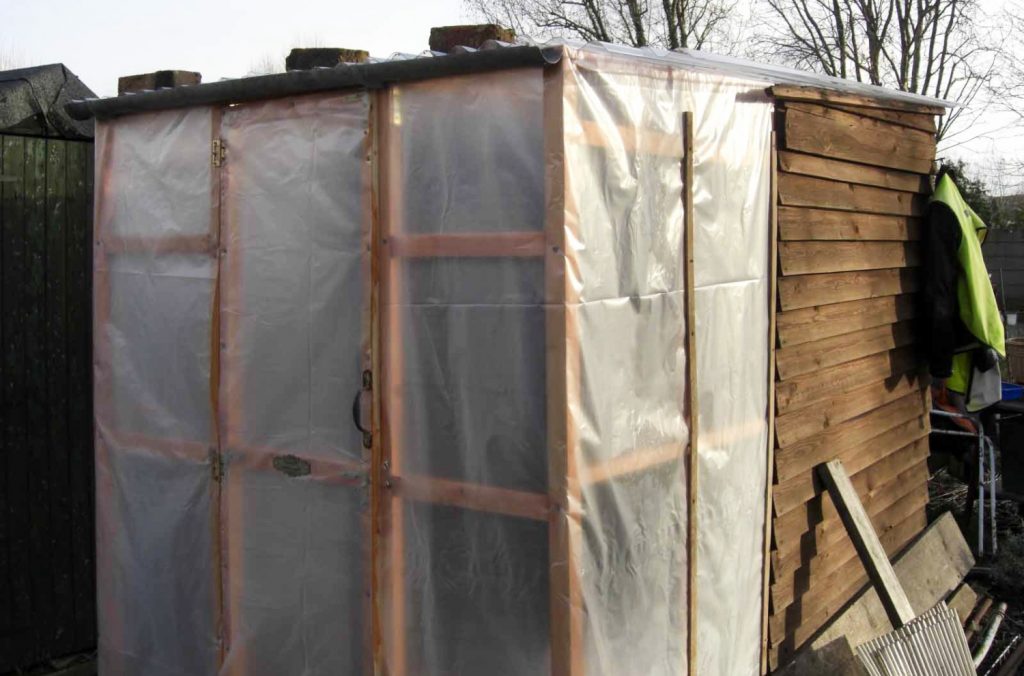
Stop digging, tilling, uprooting, and raking
The soil in your garden is an ecosystem in its own right. Every time you dig into or till the soil, you expose beneficial bacteria to the air, which quickly kills them.
These bacteria play a crucial role in your garden, by enhancing your crops’ immunity to diseases and pests.
Uprooting your crops at the end of the season can also have detrimental effects on these bacteria.
Healthy microorganisms in the soil feed on decaying roots, breaking them down into their baser elements needed to help future plants thrive.
So rather than digging up or tilling your garden’s soil, consider planting in raised beds, or, again, reading up on the Ruth Stout gardening method, which simply involves covering the soil in a thick layer of mulch, and starting your garden in that.
Additionally, you should avoid uprooting plants at the end of the season, and instead, use a sharp knife to cut them down to ground level, tossing the plants onto your compost heap, and leaving the roots in place for soil bacteria to feed on.
While you’re at it, give your leaf rake a rest. Raking up leaves deprives the soil of organic materials needed to add structure and nutrients.
Leaf litter improves soil fertility. It makes the soil more porous, so oxygen and water can penetrate and it can drain more easily. So don’t rake those leaves up, just “leaf” them where they fall and let them do their thing!
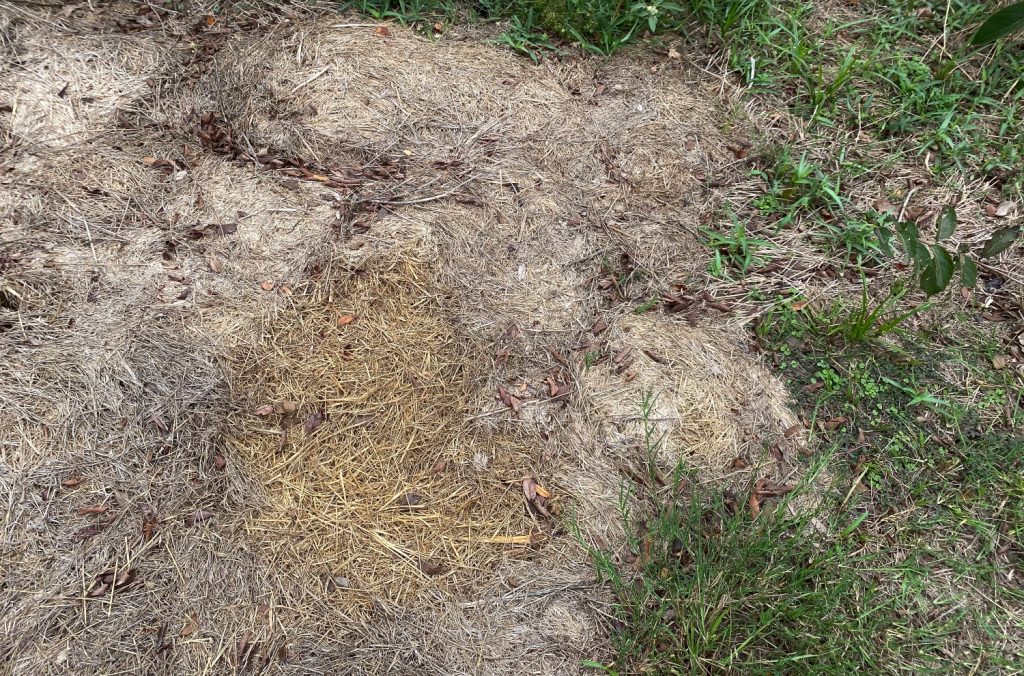
Zero-waste gardening keeps the environment clean
Sustainable gardening doesn’t have to be hard. It just takes some forethought, that’s all.
Zero-waste gardening provides you with a new perspective, one which allows you to work with nature to reduce the negative impact you and your household may inadvertently have on the environment, while also allowing you to reuse and recycle biodegradable materials so they don’t wind up in a landfill.
Start implementing these easy zero-waste gardening tips in your backyard, and witness firsthand what a difference going green can make on your local ecosystem!
